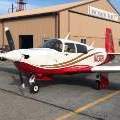Engine stumbled two back to back flights
-
Members Online
- N201MKTurbo
- eman1200
- Bunti
- madjano
- jeremyc209
- NACA
- Marc_B
- Pinecone
- jordanjms
- christaylor302
- CutrightAviation
- Utah20Gflyer
- Rick Junkin
- hazek
- Igor_U
- pirate
- ArtVandelay
- Skyland
- cliffy
- kortopates
- ta2too
- Justin Schmidt
- Ragsf15e
- Paul Thomas
- Hank
- ProtoFly
- JKL
- 1980Mooney
- Jblanton
- TCC
- Logwes21
- GeeBee
- NickG
- MikeOH
- Shadrach


Recommended Posts